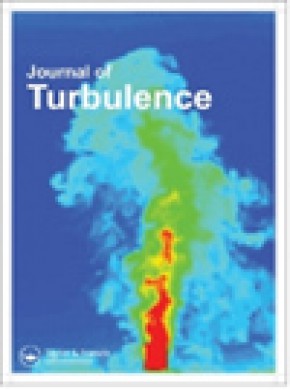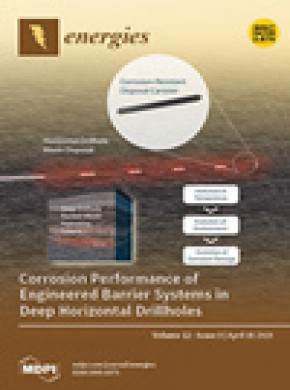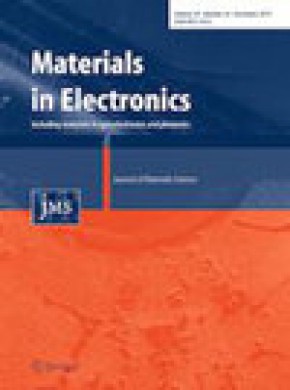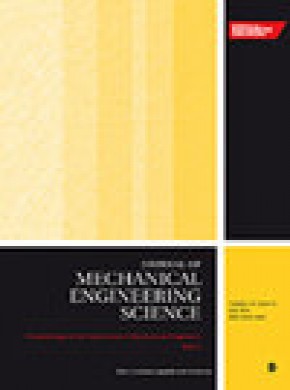國(guó)際標(biāo)準(zhǔn)簡(jiǎn)稱:IET NANOBIOTECHNOL
人氣 322
《Iet Nanobiotechnology》是一本專注于BIOCHEMICAL RESEARCH METHODS領(lǐng)域的English學(xué)術(shù)期刊,創(chuàng)刊于2007年,由Wiley出版商出版,出版周期Bi-monthly。該刊發(fā)文范圍涵蓋BIOCHEMICAL RESEARCH METHODS等領(lǐng)域,旨在及時(shí)、準(zhǔn)確、全面地報(bào)道國(guó)內(nèi)外BIOCHEMICAL RESEARCH METHODS工作者在該領(lǐng)域的科學(xué)研究等工作中取得的經(jīng)驗(yàn)、科研成果、技術(shù)革新、學(xué)術(shù)動(dòng)態(tài)等。該刊已被SCIE數(shù)據(jù)庫(kù)收錄,在中科院最新升級(jí)版分區(qū)表中,該刊分區(qū)信息為大類學(xué)科工程技術(shù)4區(qū),2023年影響因子為3.8。
Electrical and electronic engineers have a long and illustrious history of contributing new theories and technologies to the biomedical sciences. This includes the cable theory for understanding the transmission of electrical signals in nerve axons and muscle fibres; dielectric techniques that advanced the understanding of cell membrane structures and membrane ion channels; electron and atomic force microscopy for investigating cells at the molecular level.
Other engineering disciplines, along with contributions from the biological, chemical, materials and physical sciences, continue to provide groundbreaking contributions to this subject at the molecular and submolecular level. Our subject now extends from single molecule measurements using scanning probe techniques, through to interactions between cells and microstructures, micro- and nano-fluidics, and aspects of lab-on-chip technologies. The primary aim of IET Nanobiotechnology is to provide a vital resource for academic and industrial researchers operating in this exciting cross-disciplinary activity. We can only achieve this by publishing cutting edge research papers and expert review articles from the international engineering and scientific community. To attract such contributions we will exercise a commitment to our authors by ensuring that their manuscripts receive rapid constructive peer opinions and feedback across interdisciplinary boundaries.
IET Nanobiotechnology covers all aspects of research and emerging technologies including, but not limited to:
Fundamental theories and concepts applied to biomedical-related devices and methods at the micro- and nano-scale (including methods that employ electrokinetic, electrohydrodynamic, and optical trapping techniques)
Micromachining and microfabrication tools and techniques applied to the top-down approach to nanobiotechnology
Nanomachining and nanofabrication tools and techniques directed towards biomedical and biotechnological applications (e.g. applications of atomic force microscopy, scanning probe microscopy and related tools)
Colloid chemistry applied to nanobiotechnology (e.g. cosmetics, suntan lotions, bio-active nanoparticles)
Biosynthesis (also known as green synthesis) of nanoparticles; to be considered for publication, research papers in this area must be directed principally towards biomedical research and especially if they encompass in vivo models or proofs of concept. We welcome papers that are application-orientated or offer new concepts of substantial biomedical importance
Techniques for probing cell physiology, cell adhesion sites and cell-cell communication
Molecular self-assembly, including concepts of supramolecular chemistry, molecular recognition, and DNA nanotechnology
Societal issues such as health and the environment
Special issues. Call for papers:
Smart Nanobiosensors for Next-generation Biomedical Applications - https://digital-library.theiet.org/files/IET_NBT_CFP_SNNBA.pdf
Selected extended papers from the International conference of the 19th Asian BioCeramic Symposium - https://digital-library.theiet.org/files/IET_NBT_CFP_ABS.pdf
| 大類學(xué)科 | 分區(qū) | 小類學(xué)科 | 分區(qū) | Top期刊 | 綜述期刊 |
| 工程技術(shù) | 4區(qū) | BIOCHEMICAL RESEARCH METHODS 生化研究方法 NANOSCIENCE & NANOTECHNOLOGY 納米科技 | 4區(qū) 4區(qū) | 否 | 否 |
| 大類學(xué)科 | 分區(qū) | 小類學(xué)科 | 分區(qū) | Top期刊 | 綜述期刊 |
| 工程技術(shù) | 4區(qū) | BIOCHEMICAL RESEARCH METHODS 生化研究方法 NANOSCIENCE & NANOTECHNOLOGY 納米科技 | 4區(qū) 4區(qū) | 否 | 否 |
| 大類學(xué)科 | 分區(qū) | 小類學(xué)科 | 分區(qū) | Top期刊 | 綜述期刊 |
| 工程技術(shù) | 4區(qū) | BIOCHEMICAL RESEARCH METHODS 生化研究方法 NANOSCIENCE & NANOTECHNOLOGY 納米科技 | 4區(qū) 4區(qū) | 否 | 否 |
| 大類學(xué)科 | 分區(qū) | 小類學(xué)科 | 分區(qū) | Top期刊 | 綜述期刊 |
| 工程技術(shù) | 4區(qū) | BIOCHEMICAL RESEARCH METHODS 生化研究方法 NANOSCIENCE & NANOTECHNOLOGY 納米科技 | 4區(qū) 4區(qū) | 否 | 否 |
| 大類學(xué)科 | 分區(qū) | 小類學(xué)科 | 分區(qū) | Top期刊 | 綜述期刊 |
| 工程技術(shù) | 4區(qū) | BIOCHEMICAL RESEARCH METHODS 生化研究方法 NANOSCIENCE & NANOTECHNOLOGY 納米科技 | 4區(qū) 4區(qū) | 否 | 否 |
| 大類學(xué)科 | 分區(qū) | 小類學(xué)科 | 分區(qū) | Top期刊 | 綜述期刊 |
| 工程技術(shù) | 4區(qū) | BIOCHEMICAL RESEARCH METHODS 生化研究方法 NANOSCIENCE & NANOTECHNOLOGY 納米科技 | 4區(qū) 4區(qū) | 否 | 否 |
中科院分區(qū):中科院分區(qū)是SCI期刊分區(qū)的一種,是由中國(guó)科學(xué)院國(guó)家科學(xué)圖書館制定出來(lái)的分區(qū)。主要有兩個(gè)版本,即基礎(chǔ)版和升級(jí)版。2019年中國(guó)科學(xué)院文獻(xiàn)情報(bào)中心期刊分區(qū)表推出了升級(jí)版,實(shí)現(xiàn)了基礎(chǔ)版和升級(jí)版的并存過(guò)渡;升級(jí)版是對(duì)基礎(chǔ)版的延續(xù)和改進(jìn),將期刊由基礎(chǔ)版的13個(gè)學(xué)科擴(kuò)展至18個(gè),科研評(píng)價(jià)將更加明確。
| 按JIF指標(biāo)學(xué)科分區(qū) | 收錄子集 | 分區(qū) | 排名 | 百分位 |
| 學(xué)科:BIOCHEMICAL RESEARCH METHODS | SCIE | Q1 | 15 / 85 |
82.9%
|
| 學(xué)科:NANOSCIENCE & NANOTECHNOLOGY | SCIE | Q3 | 71 / 140 |
49.6%
|
| 按JCI指標(biāo)學(xué)科分區(qū) | 收錄子集 | 分區(qū) | 排名 | 百分位 |
| 學(xué)科:BIOCHEMICAL RESEARCH METHODS | SCIE | Q4 | 67 / 85 |
21.76%
|
| 學(xué)科:NANOSCIENCE & NANOTECHNOLOGY | SCIE | Q3 | 87 / 140 |
38.21%
|
JCR分區(qū):JCR(Journal Citation Reports)由科睿唯安公司(前身為湯森路透)開發(fā)。JCR沒(méi)有設(shè)置大類,只將期刊分為176個(gè)具體學(xué)科,也就是中科院分區(qū)中的小類學(xué)科。基于不同學(xué)科的當(dāng)年影響因子高低進(jìn)行排序,將期刊的數(shù)量均勻分為四個(gè)部分,Q1區(qū)代表學(xué)科分類中影響因子排名前25%的期刊,以此類推,Q2區(qū)為前25%-50%期刊,Q3區(qū)為前50%-75%期刊,Q4區(qū)為75%以后期刊。
CiteScore排名:
| 學(xué)科類別 | 分區(qū) | 排名 | 百分位 |
| 大類:Engineering 小類:Electrical and Electronic Engineering | Q2 | 202 / 797 |
74%
|
| 大類:Engineering 小類:Electronic, Optical and Magnetic Materials | Q2 | 77 / 284 |
73%
|
| 大類:Engineering 小類:Biotechnology | Q2 | 116 / 311 |
62%
|
CiteScore值計(jì)算方式:例如2024公布的CiteScore是將統(tǒng)計(jì)在 2020年-2023年間年所發(fā)表文章的引用次數(shù)除以在 2020年-2023年間所發(fā)表的發(fā)文總數(shù)。
CiteScore數(shù)據(jù)來(lái)源:是由全球著名學(xué)術(shù)出版商Elsevier(愛思唯爾)基于其Scopus數(shù)據(jù)庫(kù)推出的期刊評(píng)價(jià)指標(biāo)。CiteScore指數(shù)以四年區(qū)間為基準(zhǔn)來(lái)計(jì)算每本期刊的平均被引用次數(shù),并提供期刊領(lǐng)域排名、期刊分區(qū)的相關(guān)信息,它的作用是測(cè)量期刊的篇均影響力。
近年中科院分區(qū)趨勢(shì)圖
近年IF值(影響因子)趨勢(shì)圖
影響因子:是美國(guó)科學(xué)信息研究所(ISI)的期刊引證報(bào)告(JCR)中的一項(xiàng)數(shù)據(jù)。指的是某一期刊的文章在特定年份或時(shí)期被引用的頻率,是衡量學(xué)術(shù)期刊影響力的一個(gè)重要指標(biāo)。自1975年以來(lái),每年定期發(fā)布于“期刊引證報(bào)告”(JCR)。
| 機(jī)構(gòu)名稱 | 發(fā)文量 |
| ISLAMIC AZAD UNIVERSITY | 30 |
| VELLORE INSTITUTE OF TECHNOL... | 29 |
| TEHRAN UNIVERSITY OF MEDICAL... | 19 |
| ISFAHAN UNIVERSITY MEDICAL S... | 16 |
| QUAID I AZAM UNIVERSITY | 15 |
| SSN COLLEGE OF ENGINEERING | 11 |
| IRAN UNIVERSITY OF MEDICAL S... | 9 |
| ARID AGRICULTURE UNIVERSITY | 8 |
| COUNCIL OF SCIENTIFIC & INDU... | 8 |
| ISFAHAN UNIVERSITY OF TECHNO... | 8 |
| 國(guó)家/地區(qū) | 發(fā)文量 |
| India | 166 |
| Iran | 116 |
| CHINA MAINLAND | 58 |
| Pakistan | 34 |
| USA | 19 |
| Saudi Arabia | 15 |
| Malaysia | 10 |
| South Africa | 10 |
| Egypt | 9 |
| Iraq | 9 |
| 文章引用名稱 | 引用次數(shù) |
| Biosynthesis of bimetallic a... | 15 |
| Antibacterial and dye degrad... | 14 |
| Efficacy of green nanopartic... | 12 |
| Preparation of silver iodide... | 10 |
| Fungal xylanases-mediated sy... | 10 |
| Greenly synthesised silver-a... | 10 |
| Green synthesis of copper ox... | 9 |
| Sustainable green synthesis ... | 8 |
| Antibacterial and catalytic ... | 7 |
| Biosynthesis of xanthan gum-... | 7 |
| 被引用期刊名稱 | 數(shù)量 |
| IET NANOBIOTECHNOL | 125 |
| MATER RES EXPRESS | 28 |
| J CLUST SCI | 25 |
| MICRO NANO LETT | 20 |
| RSC ADV | 20 |
| MOLECULES | 18 |
| NANOMATERIALS-BASEL | 18 |
| MAT SCI ENG C-MATER | 17 |
| INT J NANOMED | 13 |
| INT J BIOL MACROMOL | 11 |
| 引用期刊名稱 | 數(shù)量 |
| IET NANOBIOTECHNOL | 125 |
| INT J NANOMED | 89 |
| COLLOID SURFACE B | 88 |
| BIOMATERIALS | 77 |
| RSC ADV | 66 |
| MAT SCI ENG C-MATER | 63 |
| ACS NANO | 58 |
| INT J BIOL MACROMOL | 52 |
| SPECTROCHIM ACTA A | 51 |
| J CONTROL RELEASE | 47 |
1、建議稿件控制10頁(yè)以上,文章撰寫語(yǔ)言為英語(yǔ);(單欄格式,單倍行距,內(nèi)容10號(hào)字體,文稿類型包含:原創(chuàng)研究(Original Research)、案例報(bào)告(Case Report)、文獻(xiàn)綜述(Literature Review)等;文件格式包含word、PDF、LaTeX等。
2、稿件重復(fù)率控制10%以內(nèi),論文務(wù)必保證原創(chuàng)性、圖標(biāo)、公式、引文等要素齊備,保證附屬資料的完整。已發(fā)表或引用過(guò)度的文章將不會(huì)被出版和檢索,禁止一稿多投,拒絕抄襲、機(jī)械性的稿件。
3、稿件必須有較好的英語(yǔ)表達(dá)水平,有圖,有表,有公式,有數(shù)據(jù)或設(shè)計(jì),有算法(方案,模型),實(shí)驗(yàn),仿真等;參考文獻(xiàn)控制25條以上,參考文獻(xiàn)引用一半以上控制在近5年以內(nèi)。
圖片和圖表要求:1、建議使用TIFF、EPS、JPEG格式 ,TIFF格式 使用LZW壓縮。
2、文件大小最大不超過(guò)20MB,不要以單個(gè)文件的形式上傳數(shù)據(jù)。
3、彩色圖片的分辨率≥300dpi;黑白圖片的分辨率在≥500dpi;line art圖片類型的分辨率≥1000dpi;色彩模式建議采用RGB,除非期刊注明要CMYK。
4、線條不要細(xì)于0.25pt,也不能太粗,超過(guò)1.5pt,過(guò)細(xì)或過(guò)粗都影響美觀。
5、表格一般和manuscrript放置在一個(gè)word文檔里部分期刊 需要單獨(dú)上傳表格。
作者信息:1、包括作者姓名、最高學(xué)位,作者單位(精確到部門),郵箱,地址,郵編,關(guān)鍵詞,內(nèi)容,總結(jié),項(xiàng)目基金,參考文獻(xiàn),作者相片+簡(jiǎn)介(一定要確保作者信息準(zhǔn)確無(wú)誤,提交稿件之后這部分不能再作改動(dòng))。
更多征稿細(xì)則請(qǐng)查閱雜志社征稿要求。本站專注期刊咨詢服務(wù)十年,確保SCI檢索,稿件信息安全保密,合乎學(xué)術(shù)規(guī)范不成功不收費(fèi),詳情請(qǐng)咨詢客服。
WILEY, 111 RIVER ST, HOBOKEN, USA, NJ, 07030-5774
若用戶需要出版服務(wù),請(qǐng)聯(lián)系出版商:WILEY, 111 RIVER ST, HOBOKEN, USA, NJ, 07030-5774。

中科院分區(qū) 4區(qū)

中科院分區(qū) 4區(qū)

中科院分區(qū) 4區(qū)

中科院分區(qū) 4區(qū)

中科院分區(qū) 4區(qū)

中科院分區(qū) 4區(qū)

中科院分區(qū) 4區(qū)

中科院分區(qū) 4區(qū)